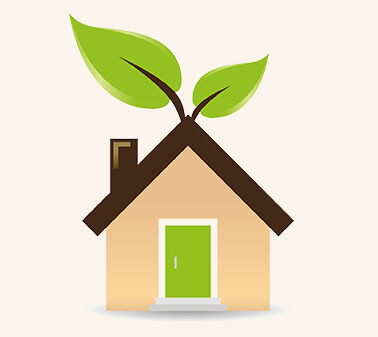There is not repudiating to the fact that sustainable building is still in its embryonic stage in the country, but according to numbers, India is one of the leading countries when it comes to green building developments. In actual fact, India ranks number ‘2’ after the US in terms of the number of green technology projects and built-up area.
As per the data shared by Indian Green Building Council (IGBC), as of September 2017 more than 4,300 projects utilizing green technology, accounting for roughly 4.7 billion sq. Ft. of built-up area, are registered in India. Well, while these numbers represent only 5% of the total buildings in India, our country’s Green Building market is expected to double i.e. 20 billion sq. Ft. by 2022.
What Institutes A Green Building?
US Environment Protection Agency (UEPA) defines the construction of Green Building as the practice of using technologies and processes which are environmentally responsible and energy efficient all over the lifecycle of the building. It typically includes the design, construction, aptness of the site, operations, renovation, deconstruction, and maintenance. The major benefits of Green Buildings are:
- Healthier air quality
- Greater natural/daylight
- Optimum use of water and electricity
- Improved health and wellbeing of inhabitants
- Protection of ecosystem
Even though the initial investments of constructing a green building can be moderately high as compared to the conventional ones, the enduring benefits make sustainable building an enormously viable long-term investment decision for both consumers and developers. In India, GRIHA and IGBC are the leading bodies who define the green buildings’ standards.
Challenges Hindering Rapid Adoption Of Green Building Practices In India
Even though green building practices is gaining increasing acceptance in the construction industry as a viable solution for meeting the growing demand for environmentally friendly or healthy buildings. However, the uptake of Green Building technologies is not as apparent as it should have been. Take a look at the top barriers preventing the wider adoption of Green building technologies.
buy cytotec australia no prescription 1. Limited Awareness
A very large segment of Indian users is unaware of green buildings and its enduring benefits even today. Also, users who know little about green buildings perceive it to be an expensive and financially unachievable option.
where can i buy stromectol 2. Inadequate Government’s Policies & Procedures
Irrespective of the fact that India is setting ambitious targets for green building agenda, sadly most of it is not complemented with proper government rules and regulations to spur growth. There is an inadequacy of proper government rules and regulations to enforce large-scale implementation of green buildings norms.
3. Extra Clearances And Approvals
Builders and developers have to go through a very tedious process when it comes to approvals, adding to that burden is the list of approvals for green building compliances, this can be one potential reason deterring rapid adoption of green buildings.
4. Deficient Incentives To Encourage Adoption
Currently, there are very few incentives plans available to encourage green building adoption in India. Also, the ones which exist are not uniform as they vary across different states and cities, depending largely on the diverse governing bodies. In most of the cases, green building incentives are in the form of additional FAR, which is followed by a rebate on the property tax and other similar schemes. But, these incentives have often failed to encourage large-scale adoption of green buildings practices in the country.
5. Expensive Equipment And Products
The equipment and products used in the construction of green buildings are way too expensive when compared to the conventional ones. Many developers and builders are concerned that adopting green features into their buildings will involve high upfront costs, hence they are confined to investing in them.
6. Lack Of Skilled Manpower And Subject Matter Experts
One of the biggest factors holding back Green Building Adoption in India is lack of skilled experts and manpower. From policymakers to architects, engineers to contractors and workers, none of the groups possess adequate knowledge and skills needed for green buildings construction.
Final Thoughts
The significance of environmental issues is being actively acknowledged in the construction industry and the pledge for Green Buildings as one viable approach to meet environmental, social, and economic goals. For India, accelerating Green Building adoption means tuning of norms, better incentive schemes, healthy financial support system and, above all, increasing cognizance among all stakeholders.
Curated by editor at Wienerberger India
Like this story? Or have something to share? Write to us: gosmartbricks@gmail.com or connect with us on Facebook and Twitter.











